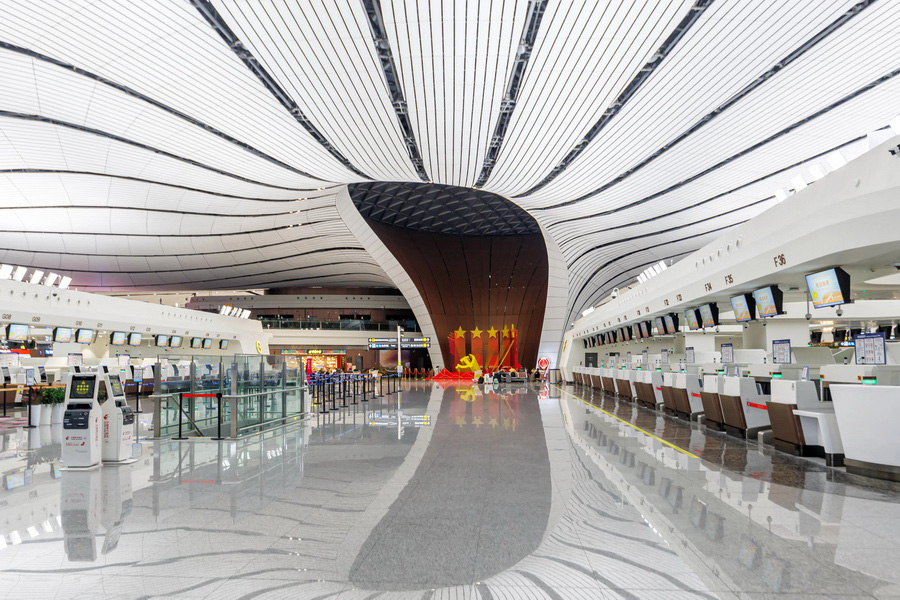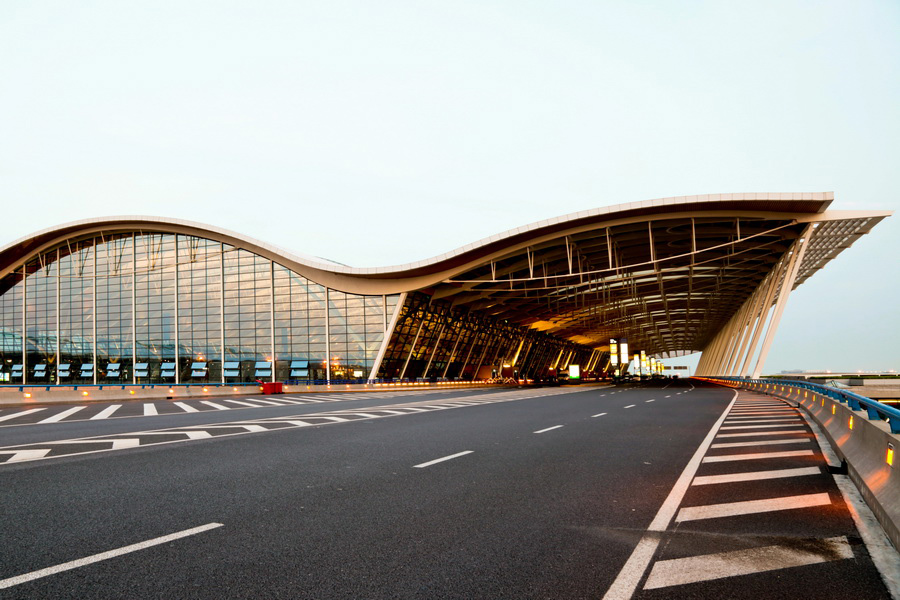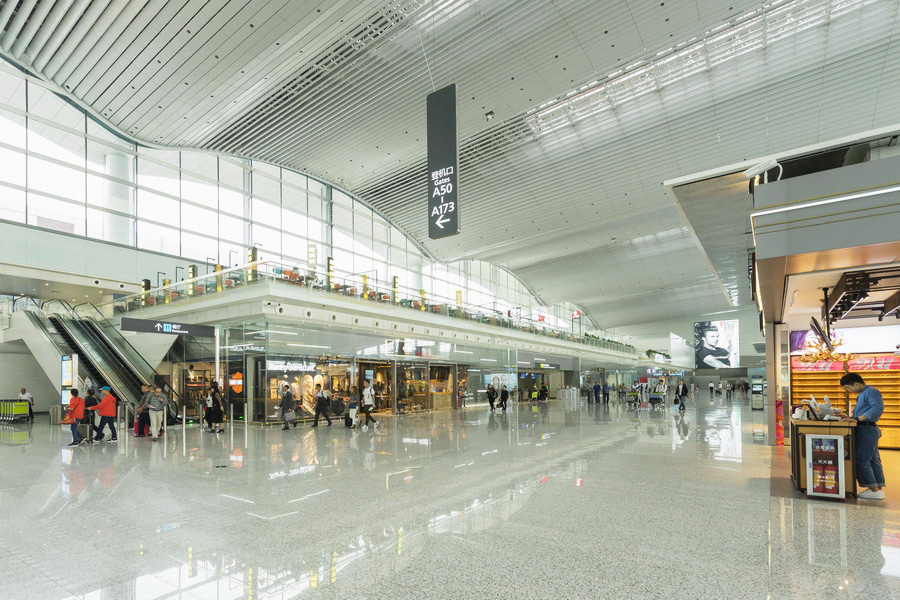
- 1. What Is an eligible transit route to get the 24-hour TWOV?
- 2. How to apply for a China 24-hour TWOV in 5 easy steps?
- 3. How is the stopover time counted?
- 4. 9 airports in China that simplify transit
- 5. What are the advantages of transiting through these 9 airports?
- 6. What are the entry and exit port restrictions?
- 7. Can you leave the airport during a 24-hour TWOV?
- 8. Transit involving multiple cities in China
- 9. How to be prepared for a smooth 24-hour transit?
- 10. Useful tips for long layovers
The China 24-hour visa-free transit (TWOV) policy allows international travellers to transit through mainland China to a third country without the need for a visa. Under this policy, passengers may remain in China for up to 24 hours, provided they meet certain requirements and have a defined route. This arrangement facilitates short layovers for those not intending to stay in China for tourism or business, making it convenient if they’re changing flights or carriers. Understanding the conditions, permitted routes, and entry procedures is essential to ensure a smooth transit experience.
However, this policy has certain exceptions depending on the traveller's nationality and the port of transit. Therefore, each individual should make enquiries before travelling to understand the conditions that apply to them specifically.
What Is an Eligible Transit Route to Get the 24-hour TWOV?
To reap the benefits of transit without a visa, travellers must adhere to a clear route from Country (A) to China (B) and then to Country (C). For example, a passenger departing from New York, transferring to Beijing, and continuing to Tokyo qualifies for 24-hour TWOV and won’t need to apply for a visa, provided they don’t exceed the 24-hour time limit.
How to Apply for a China 24-Hour TWOV in 5 Easy Steps
After the arrival at a Chinese airport, eligible travellers should follow five simple steps to complete the 24-hour visa-free transit procedure:
- Notify your airline during check-in that you intend to utilise the 24-hour TWOV option.
- Proceed to the immigration area designated for 24-hour visa-free transit.
- Complete the Arrival/Departure Card at the border inspection counter.
- Request a temporary permit sticker or a stamp at the counter and receive it to proceed to the next step.
- Retrieve your checked luggage if applicable and proceed through customs as usual.
The 24-hour transit without a visa policy is fee-free; however, individuals must have the required basic documents at hand to obtain a temporary permit if they wish to depart their port of arrival.
Required documents include:
- A valid passport for at least three months.
- A confirmed onward flight, cruise, or train ticket with a booked seat and date.
- If applicable, a valid visa for a third country or region.
If these conditions are not met, passengers will be denied boarding in country A.
Who is not eligible?
- People who are banned from entering the country due to legal and administrative regulations, such as those subject to sanctions or travel restrictions.
- Those whose passports’ or international travel documents’ validity does not exceed 3 months upon the time of arrival, or those who have received a refusal stamp at entry to China from relevant authorities.
- Individuals with a history of unlawful entry, exit, residence, or employment in China within the past five years;
- People who have breached accommodation registration rules within the last two years, under serious circumstances.
How Is the Stopover Time Counted?
The 24 hours are calculated from the arrival time in China and last until the departure time. If the layover exceeds 24 hours due to flight delays or unexpected schedule changes, travellers must report to immigration authorities immediately. They will be subject to fines or penalties for not doing so.
9 Airports in China That Simplify Transit

Busy airports that handle thousands of daily connecting flights often have streamlined procedures to ensure a comfortable travel experience. The Chinese government has implemented a free 24-hour transit visa policy that does not require immigration inspection procedures if travellers do not leave the international departure area at the following nine airports:
- Beijing Capital International Airport (PEK)
- Beijing Daxing International Airport (PKX)
- Chengdu Tianfu International Airport (TFU)
- Guangzhou Baiyun International Airport (CAN)
- Hangzhou Xiaoshan International Airport (HGH)
- Shanghai Pudong International Airport (PVG)
- Shenzhen Bao’an International Airport (SZX)
- Xiamen Gaoqi International Airport (XMN)
- Xi’an Xianyang International Airport (XIY)
What Are the Advantages of Transiting Through These 9 Airports?
Transiting through these international airports in China offers a variety of significant benefits for travellers making a short layover to a third country.
Better Time Management
The absence of additional immigration checks saves considerable time and alleviates the stress of navigating an unfamiliar airport and trying to reach your gate on time. The straightforward process reduces the waiting time and helps avoid unnecessary delays.
Simplified Travel Formalities and Cost Savings
Those who take advantage of the 24-hour TWOV policy are not required to obtain a Chinese visa solely for transit purposes. This saves them from additional procedures, service fees, and wait times for confirmations.
Opportunity for Short Excursions
The 24-hour transit without a visa arrangement provides an excellent opportunity to explore the city while waiting for the next flight. With a temporary entry permit, passengers are allowed to leave the airport, sightsee, dine at local restaurants, and enjoy their time to the fullest as long as their schedule permits.
Extensive International Connectivity
The nine designated airports serve as critical nodes in global air travel, offering seamless connections to a wide array of destinations across Asia, Europe, the Americas, and other regions.
Improved Travel Flexibility
The exemption from immigration procedures allows for greater adaptability in travel planning. Passengers can incorporate China’s major international airports into their itineraries without the need to prepare for visa arrangements or entry procedures.
Enhanced Transit Experience
By eliminating the need to handle immigration supporting materials, the transit process becomes simple and relaxed, which is beneficial for travellers on tight layover schedules or extended international journeys.
For more in-depth information about the immigration process, please contact your nearest Chinese embassy or consulate in advance.
What Are the Entry and Exit Port Restrictions?
Although the 24-hour visa-free transit technically applies to all of China, there are still some exceptions imposed by certain airports for passengers. Four operating airports currently limit the 24-hour TWOV policy:
- Fuzhou Changle Airport (FOC)
- Huangshan Tunxi International Airport (TXN)
- Mudanjiang Hailang International Airport (MDG)
- Yanji Chaoyangchuan International Airport (YNJ)
Can You Leave the Airport During a 24-Hour TWOV?

The simple answer to this question is “Yes”, but there are limitations. Leaving the airport during a 24-hour layover requires a Temporary Entry Permit, which is issued by the border officials in some airports. Visitors who wish to leave the airport must apply for this document at the immigration counter after landing. Here are some tips to follow:
- Have a passport valid for at least 3 more months after the date of your arrival.
- Have an onward ticket with a confirmed seat.
- Have a short, clear itinerary or hotel reservation.
- Have a visa to the third country, if applicable.
Transit Involving Multiple Chinese Cities
The 24-hour visa-free transit policy provides a degree of flexibility, permitting connecting flights within mainland China under specific conditions. Provided that the total duration of stay does not exceed 24 hours and the traveller remains within the designated transit areas, onward connections may be completed without the need for a visa. For an efficient and uninterrupted transit experience, travellers are encouraged to plan their itineraries so that both arrival and departure occur within the same entry and exit point if feasible.
How to Be Prepared for a Smooth 24-Hour Transit?
Granting entry is still the prerogative of an immigration officer. They have the right to deny entry where they deem it necessary. Here is what travellers should always do:
- Have a physical copy of a confirmed onward ticket with them
- Present complete documentation
- Carefully check the flight information and stay within the 24-hour limit.
For more information, consulting with the airline operator or immigration service officer is advised.
Useful Tips for Long Layovers
If you're not permitted to leave the airport or choose to stay inside, major airports like Beijing, Shanghai, Guangzhou, and others offer:
- In-terminal hotels and sleeping cabins or pods
- Restaurants and lounges
- Free Wi-Fi and mobile charging stations
- Currency exchange counters and ATMs
- Prayer rooms: Major airports like the Beijing Capital International Airport (PEK), Chengdu Shuangliu International Airport (CTU), Xi’an Xianyang International Airport (XIY), and the International Airport of Ordos Ejin Horo (DSN) in Inner Mongolia all have prayer rooms for believers of various religions, equipped with essential amenities such as prayer mats for Muslims.
- If you’re travelling with children, some airports have family-friendly facilities and play areas to ensure a pleasant layover experience. Most large airports also feature changing or nursing rooms for infants and their mothers.

